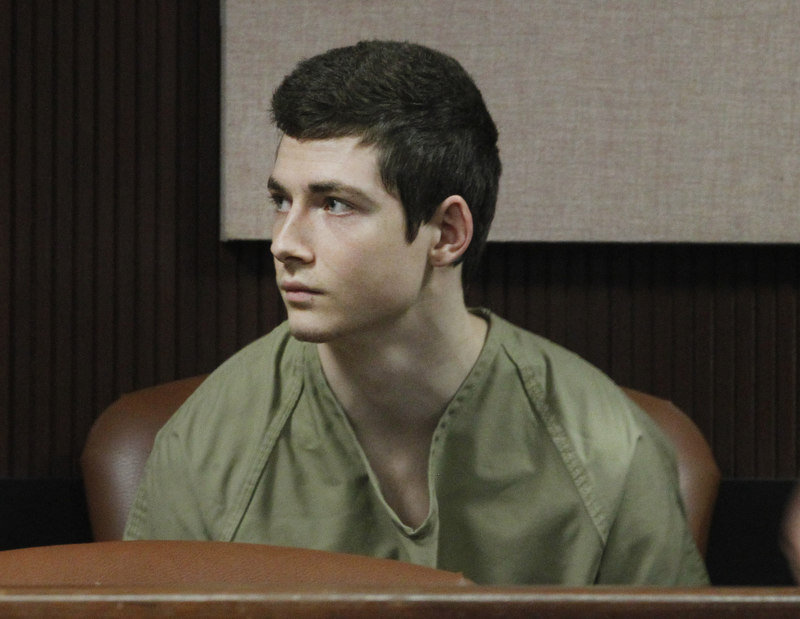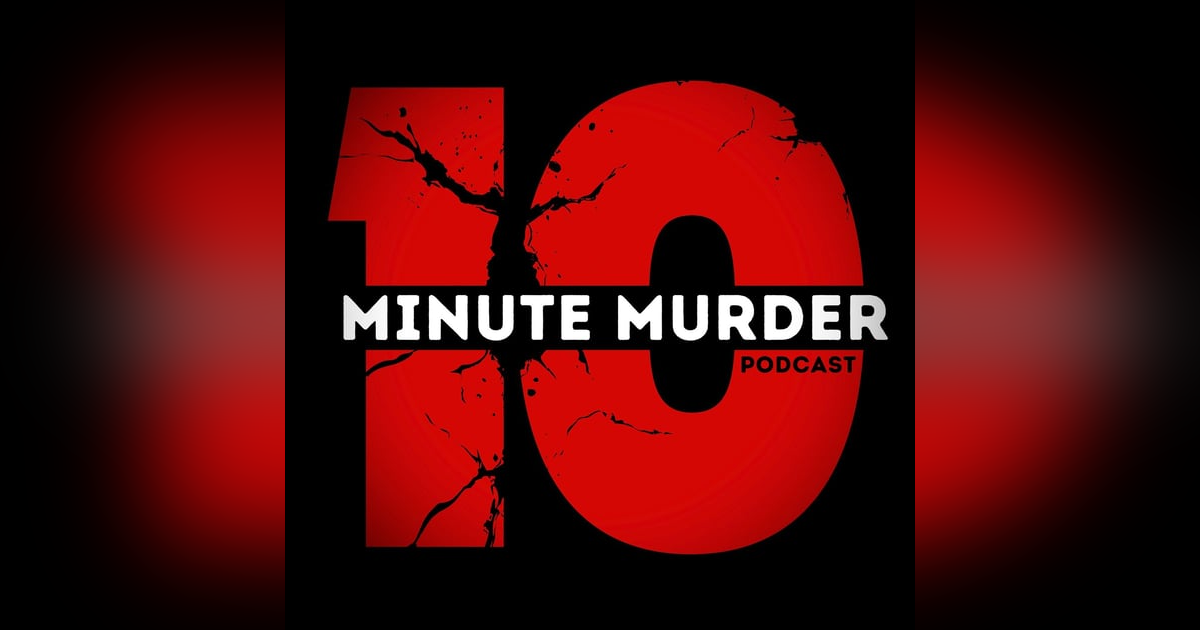The Midnight Baseball Bat Murders: A Grandson's Unthinkable Crime

At 5:57 AM on February 13th, 2016, a young man called 911 from a Walmart parking lot. He was covered in blood, claimed he didn't know where he came from, and had no shoes. Twenty minutes later, police would find his grandparents dead in their beds, beaten with a baseball bat. But that's where this story really begins...
The American Dream Shattered in Branchburg
Here's what happens when the American Dream becomes a nightmare. In February 2016, Branchburg, New Jersey was the kind of quiet suburban community where terrible things weren't supposed to happen. It was the kind of place where 78-year-old Hungarian immigrants like Louis Simon Sr. could build a life as an engineer and inventor, holding multiple patents in recycled plastics.
Louis arrived in America in 1956 with nothing but determination and mechanical brilliance that made him a pioneer in environmental engineering. His patents in recycled plastics technology were groundbreaking, converting plastic waste into usable construction materials decades before environmental consciousness became mainstream. Those who knew him called him a "mechanical genius," but that understates his contribution to American industry. He was self-employed because his vision was too advanced for most companies to understand.
Betty had her own remarkable story. A Brooklyn native and former Ford model who built a 21-year career at Verizon Wireless, she was also a CCD teacher who shared her faith with young people. Together, they created something beautiful - their Branchburg home became the gathering place for a large extended family. Betty planned every holiday, remembered every birthday, made sure nobody felt forgotten.
They had earned their golden years, their quiet Saturday mornings, their cruise vacations. They had earned the right to feel safe in the home they had worked so hard to create.
But on that cold February morning, their story ended in the most brutal way possible.
The Call That Changed Everything
At 5:57 AM, Readington Township police received a 911 call that would haunt anyone who heard it. The caller was 20-year-old Ezra Simon-Daniels, and he was calling from the parking lot of a Walmart on Route 22.
The conversation was bizarre. Ezra told the dispatcher he was shaking, had the car's seat heaters on, and when asked about his condition, mentioned he had no shoes and there was blood on his feet. Not "I'm hurt" or "I've been attacked." Something much stranger. Something that suggested a complete disconnection from reality.
When officers arrived eighteen minutes later, they found Ezra sitting in the driver's seat of a car, covered in blood but completely uninjured. Somerset County Prosecutor Geoffrey Soriano would later emphasize this critical detail - the blood wasn't his.
The Discovery That Broke a Community
Based on Ezra's 911 call, Readington police contacted Branchburg officers to do a welfare check at the address he'd given them. When no one answered repeated knocks at the Simon home, officers entered the residence.
What they found was unconscionable. Louis and Betty Simon were dead in their bed, victims of what investigators called "significant blunt force trauma to their heads." They had been attacked while they slept, in what should have been the safest place in the world.
The murder weapon was still inside the house: an aluminum baseball bat.
Here's what makes this even more devastating... Ezra wasn't some random intruder. He was their grandson. The young man they'd opened their home to. The family member they were trying to help.
When Family Becomes the Enemy
The relationship between Ezra and his grandparents adds layers of tragedy to an already horrific crime. This wasn't a stranger breaking in during the night. This was someone Louis and Betty trusted enough to share their home with. Ezra had been living with his grandparents, presumably because they wanted to help him get on his feet.
Louis and Betty were at an age where they could have been enjoying retirement without responsibility for raising another generation. Instead, they opened their home to their grandson, believing they could provide the stability he needed. They were the kind of grandparents who would never give up on family, even when family became challenging.
The family's grief was compounded by media attention. Louis's obituary contained a handwritten note that speaks volumes: "NO PRESS ALLOWED" at the funeral services. These were people who had to bury their loved ones while the world watched. The fact that they felt compelled to ban media from the funeral tells us everything about how invasive the coverage had become.
The Simon family had to navigate something unthinkable - mourning their murdered loved ones while grappling with the reality that the killer was also their family member. How do you grieve for grandparents you adored while wondering what you missed about their grandson?
Betty was remembered as having "a heart of gold." Louis was called "wonderful" and "one of the best" by colleagues. The tribute walls on their online obituaries were filled with messages from a shattered community. These weren't statistics in a police report - they were real people whose lives ended in unimaginable violence at the hands of someone who should have been protecting them.
The Legal Maze That Followed
Ezra was charged with two counts of first-degree murder and third-degree possession of a weapon for an unlawful purpose. Bail was set at $2 million cash-only. By June 2016, he had been formally indicted by a Somerset County grand jury.
But here's where the case becomes even more complex. During the investigation, something extraordinary emerged - Ezra claimed he had no memory of what happened that night. Complete amnesia regarding the most violent act imaginable. This wasn't selective memory or convenient forgetfulness. Ezra genuinely appeared to have no recollection of the events that led to his grandparents' deaths.
This revelation forced the legal system to grapple with fundamental questions about criminal responsibility. In New Jersey, prosecutors must prove both the physical act and the mental state required for conviction. When a defendant claims complete memory loss, it creates unprecedented challenges for both prosecution and defense.
Ezra underwent psychiatric evaluation by Dr. Martin Weinapple at Princeton, a process that would determine whether he was competent to stand trial and potentially lay groundwork for an insanity defense. Competency focuses on the defendant's present mental state - can they understand the charges and assist in their defense? An insanity defense focuses on their mental state at the time of the crime.
Ezra was sent to the Ann Klein Forensic Center in Trenton for evaluation, a facility that specializes in these complex assessments. Cases involving complete memory loss present unique challenges - how do you assess someone's mental state during a crime they claim not to remember?
The legal proceedings in cases like this can stretch for years. Competency hearings, psychiatric evaluations, and potential appeals create a labyrinthine process that can leave families without closure. This explains why many cases involving psychiatric defenses disappear from public view, they're often resolved through plea agreements that avoid the uncertainty of trial.
The Questions That Remain
This case raises uncomfortable questions about mental health, family dynamics, and criminal responsibility. What happens in someone's mind to make them capable of such violence against people who loved them? The answer came through years of psychiatric evaluations that revealed the devastating truth.
Ezra was eventually declared incompetent to stand trial and diagnosed with schizophrenia. The murder charges were dismissed, but he was committed to Greystone State Psychiatric Hospital. By February 2021, a judge found that Ezra's "complex and complete delusional system precludes meaningful interaction with his attorney."
During one hearing, a psychiatrist testified that Ezra had told her a coyote told him to cut himself and spread his blood all over his face, walls, and mirror - and he had followed those instructions. These aren't the delusions of someone who chose to be violent. These are symptoms of someone whose brain chemistry had fundamentally broken down.
The Silence That Speaks Volumes
For years, the public record seemed to vanish. Now we know why. Starting in 2021, Simon-Daniels filed appeals to be released from psychiatric commitment. In multiple hearings, psychiatrists testified he was still experiencing hallucinations and remained dangerous.
Even when claiming his medication was working, psychiatrists suspected he wasn't taking it. When a judge ruled in 2022 that he should remain committed, Simon-Daniels interrupted, saying "It's not fair. It wasn't my fault. I didn't do a damn thing wrong." Even years later, he couldn't grasp reality.
A state Appellate Court rejected his appeals in 2023, and 27-year-old Ezra Simon-Daniels remains at Greystone State Psychiatric Hospital. The silence wasn't system failure - it was the system working when mental illness and violent crime intersect.
Legacy of Loss
Louis and Betty weren't killed by someone who chose to hurt them. They were killed by their grandson whose mind had been destroyed by schizophrenia, a disease that typically manifests in late teens and early twenties - exactly when Ezra was living with them.
The signs were probably there, but early schizophrenia symptoms can look like normal teenage behavior. Louis and Betty probably thought they were dealing with a troubled young man who needed guidance. They had no way of knowing they were living with someone whose brain was literally deteriorating.
Ezra remains hospitalized at age 27, no longer the confused 20-year-old who made that bizarre 911 call. His grandparents' deaths destroyed multiple lives, making him both perpetrator and victim of a disease he never chose. Louis and Betty deserved to grow old together, but they became casualties in a war against a disease that steals minds before it destroys lives.










